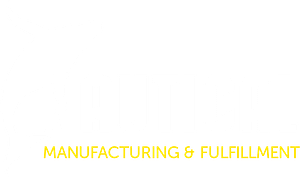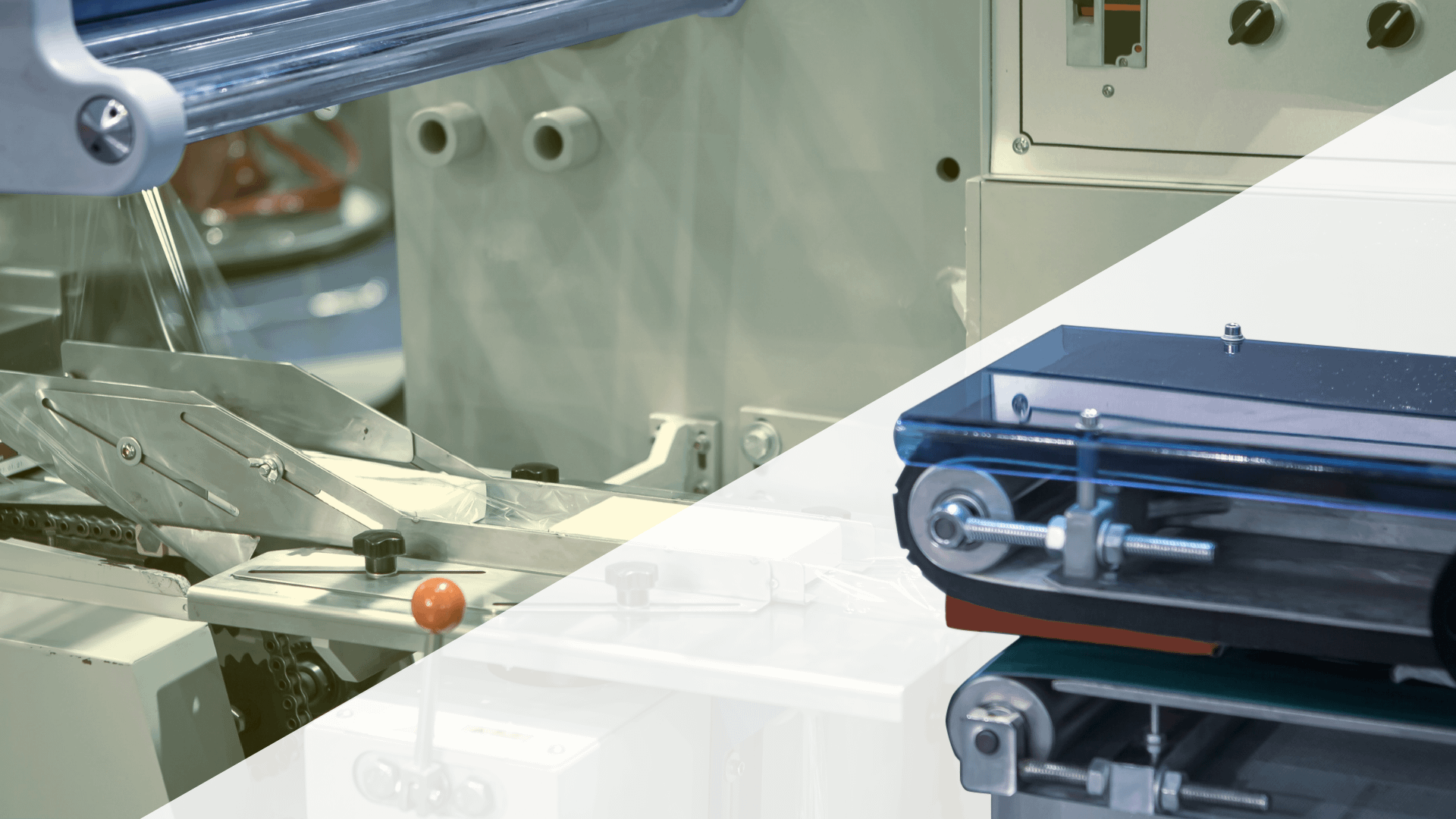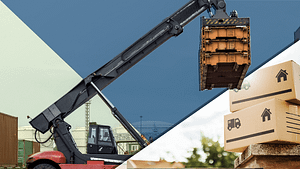Flow wrapping and overwrapping are two commonly used packaging methods for consumer goods. While they both typically use oriented polypropylene (BOPP) film to wrap a product, there are distinct differences in how the two types of packaging are used—as well as the suitable products, machinery, and the steps involved in the product of each. Let’s take a look at how these packaging methods stack up, and when to use each one.
What Is Flow Wrapping?
Flow wrapping, also known as horizontal bagging, fin-seal wrapping, pillow-pouch wrapping, or crimp-seal wrapping, is a horizontal-motion packaging procedure wherein a product (or a sample product and leaflet) is wrapped in transparent or printed polyethylene (PE), polypropylene (PP) or polyethylene terephthalate (PET) packaging. The finished product features a crimped seal on each end.
Flow wrapping is typically used in the food and beverage and pharmaceutical industries to package products like soap, lotion, and candy bars. Flow wrap packaging is ideal for companies wanting to distribute samples of their products in sealed packaging, along with additional information (like a literature card).
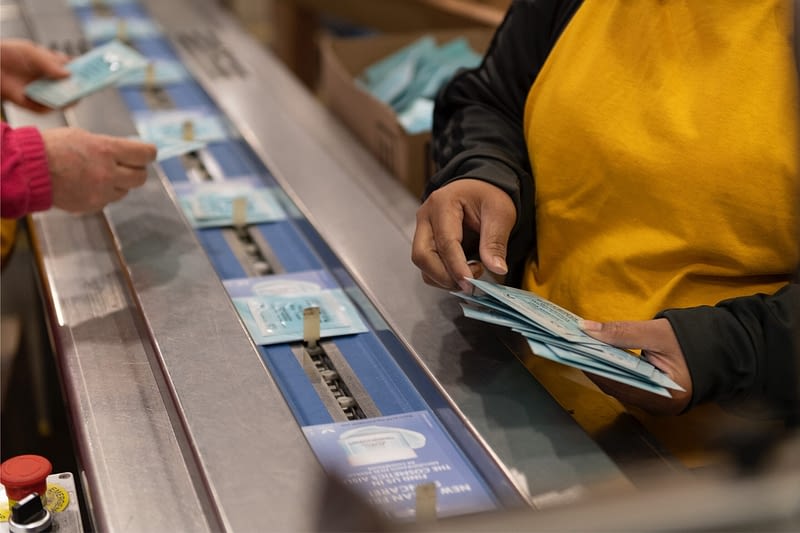
The Flow Wrap Packaging Steps
The flow wrapping process utilizes a flow wrap machine, which can be used to wrap products in any geometric shape and feature a variety of aesthetic packaging styles. The flow wrapping process consists of a series of several steps:
- Conveying the product to the film forming area: Products are delivered into the flow wrap machine by an infeed. This may be a manually-loaded conveyor belt, a stainless steel tray with guard rails and lug chain, or similar delivery mechanism, which can also be automated.
- Wrapping the product in film: A dancer roller (also referred to as a dancer bar) ensures that proper tension is maintained as the film packaging feeds off the roll and into the flow wrapper. A forming shoe guides the film as it is unspooled from the roll and wraps it around the products.
- Creating a fin seal and cutting: After the film folds under the products, paired sealing wheels create a lengthwise fin seal. A sealing bar uses heat and pressure to crimp both ends of the package, and cut the film to separate individual packs.
- Discharging the product for storage: A conveyor carries the finished items to be stored or packaged further.
This process is very quick. Even lesser-automated flow wrap machines can produce 50-150 packages per minute. Hyper-speed machines can move upwards of 1500 packages per minute.

When to Use Flow Wrapping
Flow wrapping is often chosen when an airtight seal is needed. It is often used to wrap coupons, affiliate marketing items, product samples, mailers, candy, baked goods, or any solid item that needs to be put in a bag.
Benefits of flow wrapping a product:
- Airtight Seal: The airtight seal that results from flow-wrapped products gives it a longer shelf life and helps protect it from harmful external contaminants.
- Product Size Versatility: Because flow wrap can be used with products of varying sizes, it has broad application across many industries.
- Quick Setup: The setup process for a flow wrap operation is simple and quickly configurable for products of different dimensions.
When You Shouldn't Use Flow Wrap Packaging
Flow Wrapping isn’t right for every project. Here are some main problems with flow wrap.
- Tampering: Replicating the original seal of flow wrapped items can be fairly easy, this can lead to people tampering and damaging the product.
- Misalignment: If misalignment occurs it can lead to issues such as machine jams, poor print quality, and uneven packaging.
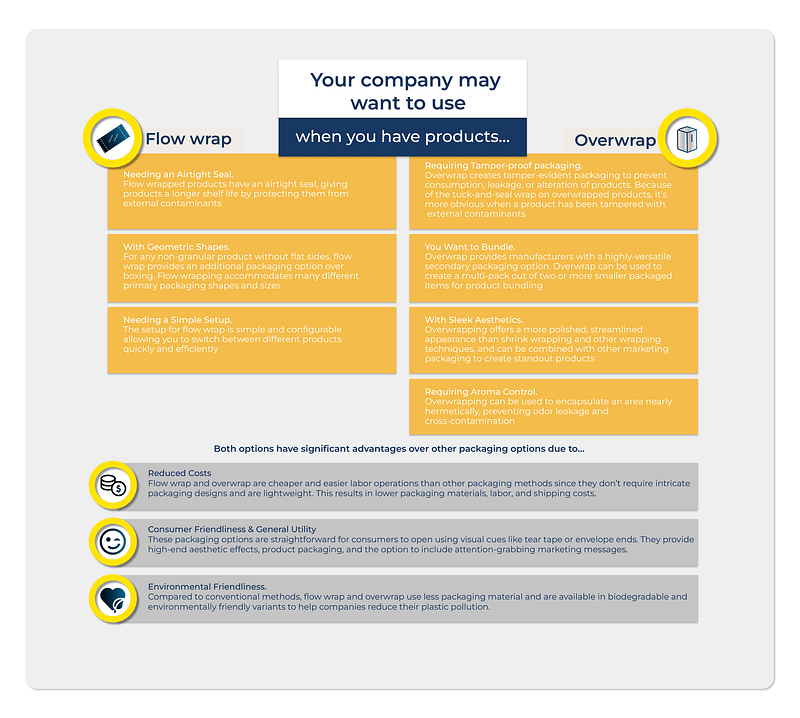
Overwrap Packaging Definition
Overwrap is a packaging method that wraps and heat-seals products with flat sides, such as cylinders and cube-shaped boxes. It uses flexible films to create a tuck-and-fold seal on boxes, cartons, and other flat-sided objects. Cigarette boxes, DVDs, and personal care items are just a few examples of things that are typically overwrapped.
The Overwrap Packaging Steps
The product is pushed through the heat-sealable film which is folded around the film. Then using heat, you just seal the film wherever the overlapping sections are. Envelope-like ends are then formed on the ends of the product. Once this is complete, the products are ready for storage and distribution.
Like flow wrap, the overwrap process also makes use of specialized equipment like overwrap machines to help produce the exact needs of the project.
- Conveying and wrapping the product: A conveyor belt pushes the product through a flexible film roll, which unspools to wrap around the items as it passes through.
- Creating a heat seal: Heat is applied to create a seal where the packaging material overlaps.
- Wrapping the ends: Shaped plates for the envelope-like ends and seal the product, wrapping it like a person would wrap a gift (with tucked ends).
- Discharging the product for storage: A conveyor carries the finished items to be stored or packaged further.

When to Use Overwrap
Overwrapping is suitable when adding secondary packaging over products that have already been sealed. It aids in preserving freshness and allows manufacturers to combine individually packaged products together in sets.
Benefits of overwrapping a product:
- Visual Appeal: The tuck-and-seal packaging that overwrap provides gives products a sleek look, adding to their appeal.
- Versatility: Because overwrap can be used as primary or secondary packaging, it’s a versatile packaging option that can add to a product’s aesthetics, protection, or in product bundling
- Anti-tampering: Overwrapped packages that have been tampered with are easily identifiable, as the seal can typically only be created by the overwrap machine and are virtually impossible to recreate without an overwrap machine.
When You Shouldn't Use Overwrapping Packaging
There are a few reasons why overwrapping can be an issue:
- Cost: While still low cost compared to other packaging options, overwrap uses about 20% more film, resulting in costs that add up over time.
- Compatibility: Overwrap packaging might not be compatible with certain products depending on size, shape, and weight. This will obviously limit the range of products that can use this packaging method.
What Packaging Method Works Best for You?
The core elements of effective packaging design are contemporary aesthetics, dependable performance, and cost-effectiveness. Both wrapping approaches excel in these areas, but depending on the needs of your business and products, one method may be preferable. Refer to the table below when choosing the best option for your packaging needs.
| Your company may want to use | |
| Flow Wrap | Overwrap |
| when you have products… | |
| Needing an Airtight Seal. Flow wrapped products have an airtight seal, giving products a longer shelf life by protecting them from external contaminants. | Requiring Tamper-proof packaging. Overwrap creates tamper-evident packaging to prevent consumption, leakage, or alteration of products. Because of the tuck-and-seal wrap on overwrapped products, it’s more obvious when a product has been tampered with. |
| With Geometric Shapes. For any non-granular product without flat sides, flow wrap provides an additional packaging option over boxing. Flow wrapping accommodates many different primary packaging shapes and sizes. | You Want to Bundle. Overwrap provides manufacturers with a highly-versatile secondary packaging option. Overwrap can be used to create a multi-pack out of two or more smaller packaged items for product bundling. |
| Needing a Simple Setup. The setup for flow wrap is simple and configurable allowing you to switch between different products quickly and efficiently | With Sleek Aesthetics. Overwrapping offers a more polished, streamlined appearance than shrink wrapping and other wrapping techniques, and can be combined with other marketing packaging to create standout products. |
| Requiring Aroma Control. Overwrapping can be used to encapsulate an area nearly hermetically, preventing odor leakage and cross-contamination. | Both options have significant advantages over other packaging options due to… |
| Reduced Costs. Flow wrap and overwrap are cheaper and easier labor operations than other packaging methods since they don’t require intricate packaging designs and are lightweight. This results in lower packaging materials, labor, and shipping costs. | |
| Consumer Friendliness & General Utility. These packaging options are straightforward for consumers to open using visual cues like tear tape or envelope ends. They provide high-end aesthetic effects, product packaging, and the option to include attention-grabbing marketing messages. | |
| Environmental Friendliness. Compared to conventional methods, flow wrap and overwrap use less packaging material and are available in biodegradable and environmentally friendly variants to help companies reduce their plastic pollution. | |
